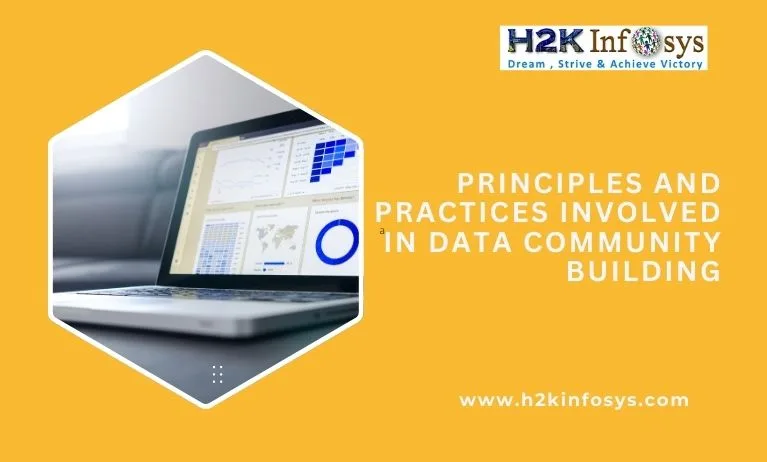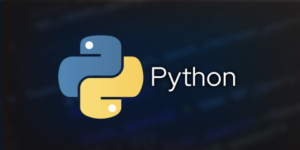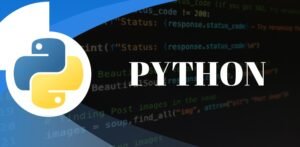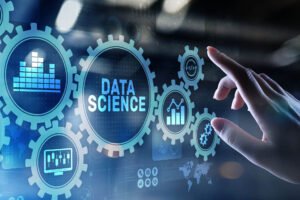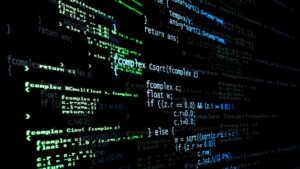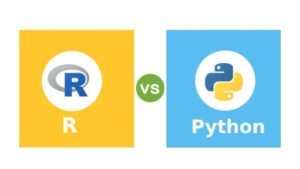Pursuing a focused interest (even if it doesn’t seem to have anything to do with data) is one of the tenets of data community creation. The key to entering a group is to make sure your niche, goal, or agenda is super clear. Conversely, reaching out and establishing relationships may be extremely helpful whether starting a new community or growing an old one. There are a number of ways to go about attracting people who are interested in these topics if you want to build a community. The practice of creating and disseminating content is essential to establishing a data community. To learn more about Data science, check out our Data science online training.
When you produce, distribute, and respond to information pertaining to data science, there are more opportunities for people to want to follow you. This also makes it easier for people with different backgrounds and skill levels to interact with one another in the field generally. Under the umbrella of the data science community, it’s a benefit because there will be more like-minded people in the same space talking about different things and different opportunities. The process of creating a diverse data science community that centres on content generation and syndication involves a methodical progression through the following five steps:
- Choose an interest or “niche” that has potential connections to data science applications.
- Make direct contact with the right audience by using social media or networking resources.
- Take in relevant knowledge related to your interests or career aspiration.
- Create original content for social media platforms.
- Maintain your contact with the community.
Taking these actions will create a committed and engaged data science community. A learning curve is to be expected from anyone interested in implementing these recommendations, as this process takes time to complete. However, the benefits of a quantifiable return on investment make the time and effort invested in this process worthwhile due to the possibilities to gain new technical skills and create relationships with a new community.
What Is Data Literacy?
There is still a technical barrier that may discourage some people from entering the profession of data science, despite the fact that it is becoming more accessible and inclusive. Newcomers will be able to interact with new communities and pick up new skills once they can comprehend data and become data literate. Becoming data literate is a crucial prerequisite for community participation. Data Literacy is the ability to read, work with, analyse, and communicate with data. The only prerequisite for data literacy is that individuals who are interested know how to understand data and can talk about data, not that they must be highly skilled in the technical aspects of the area.
Researchers in the field are starting to look into how data and the development of data literacy might help community-based organisations become more inclusive. Two scholars collaborated with community-based organisations in multiple American cities, as detailed in an academic paper that was published in the Journal of the Association for Information Science and Technology. They discovered that a number of obstacles prevent communities from making efficient use of data. Among these obstacles are:
- The limitations or accessibility of particular data sets.
- The unlocal and decentralised disadvantages of open data.
- A restricted comprehension of data and insufficient data literacy abilities.
- Working with pre-existing data structures presents obstacles.
Researchers have highlighted possible opportunities to help democratise the use of data across communities, particularly those that are underrepresented and underprivileged in digital environments. They suggest that effective data community building and data literacy learning can be achieved by:
- Creating Educational Content
- Building Partnerships in Data Ecosystems
- Increasing Community Input in Current Data Ecosystems
Becoming data literate opens doors into the broader data science industry. In this sector, learning and skill-building are cyclical, as he notes: When you know more about data, you can begin to speak about data, and you can learn data.
How Networking Impacts Data Community Building
The networking opportunity that data community building offers is among its most important aspects. Professionals fresh to the area as well as seasoned industry veterans can learn about the latest developments in data science and form new contacts through conferences, networking events, and live webinars.
There are several places where networking can take place. Discord servers and Slack channels offer one way of networking, but there are other ways of networking like conferences and events. Members of the data community now have the opportunity to listen to leaders who are the real creators in this space and learn from them in these kinds of situations.
Conclusion Check out our Data science certification online free course to learn more about the Data science community.
